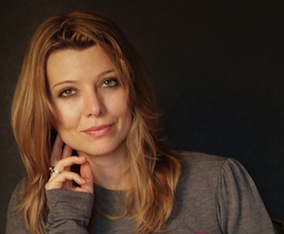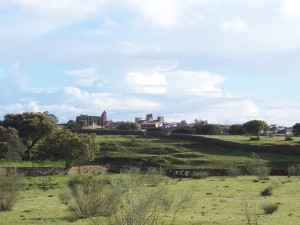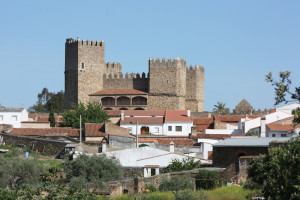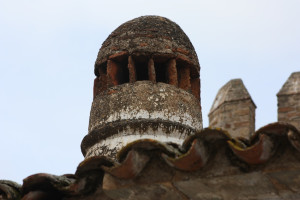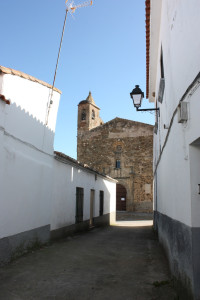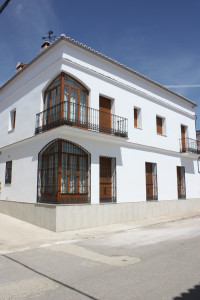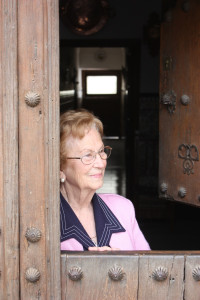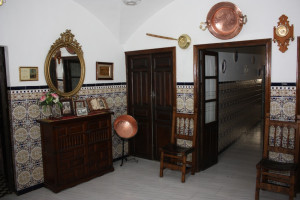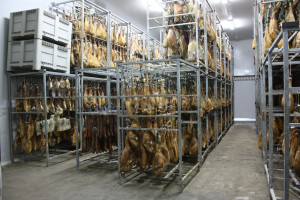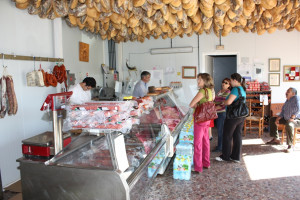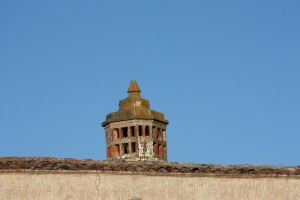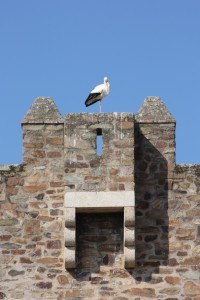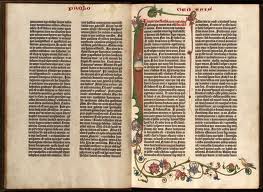Elif Shafak ~ The Politics Of Fiction
http://www.ted.com Listening to stories widens the imagination; telling them lets us leap over cultural walls, embrace different experiences, feel what others feel. Elif Shafak builds on this simple idea to argue that fiction can overcome identity politics.
Herhalingsrecepten: Noach’s pudding in De bastaard van Istanbul
Tzadjiki, is dat nu Turks of Grieks? Ik probeer mijn buurmeisje uit te leggen dat het van het Turkse woord cacık komt en dat het waarschijnlijk eerder uit de Turkse keuken afkomstig is dan uit de Griekse, omdat het basisingrediënt, yoghurt, samen met de Turken en Mongolen uit Centraal-Azië is gekomen. Maar ze gelooft me niet. En waarom zou ze ook? Het is heel moeilijk om vast te stellen waar gerechten nu echt vandaan komen. Omdat ze een onderdeel zijn van het gewone dagelijkse leven zijn er maar weinig schriftelijke bronnen waarin iets over hun herkomst en bereiding wordt verteld. Bovendien reizen gerechten en eetgewoontes door de tijden heen, en worden ze door etnische en religieuze gemeenschappen van elkaar overgenomen. Zeker in het Middellandse Zeegebied en het Midden-Oosten zijn er veel gerechten die in verschillende culturen opduiken, al is het vaak onder een andere naam.
Van dit verschijnsel maakt de Turkse schrijfster Elif Shafak in haar roman De bastaard van Istanbul op ruime schaal gebruik. Centraal staat in De bastaard van Istanbul de houding ten opzichte van de Armeense genocide van enerzijds de Turken in Turkije en anderzijds de Armeniërs in de diaspora. Elif Shafak onderbouwt dit thema door te spelen met de overeenkomst in eetcultuur. Ze gebruikt de duplicatie van eetcultuur en gerechten om de culturele verwantschap tussen Turken en Armeniërs in beeld te brengen. Verder speelt eten in deze roman ook een rol op het niveau van de structuur van het boek.
De schrijfster
Elif Shafak is een relatief jonge schrijfster die op dit moment heel populair is in Turkije, maar vooral ook daarbuiten. Ze heeft als dochter van een diplomate een deel van haar jeugd doorgebracht in het buitenland. Na haar middelbare school is ze teruggekeerd naar Turkije, waar ze sociologie en vrouwenstudies heeft gestudeerd. Ze heeft jarenlang een academische carrière gecombineerd met het schrijverschap.1 Een aantal jaren schreef ze columns voor de liberaal-religieuze krant Zaman. Deze krant is de laatste jaren flink in opkomst onder jonge Turkse intellectuelen die zich distantiëren van het strenge secularisme, en is gelieerd aan de ‘Gülen-beweging’.2
Vanwege haar roman De Bastaard van Istanbul is tegen Shafak een rechtszaak aangespannen door de ultranationalistische advocaat Kemal Kerinçsiz. Deze heeft, zonder veel succes, meerdere prominente Turkse schrijvers aangeklaagd wegens het beledigen van de Turkse staat, waaronder ook Nobelprijswinnaar Orhan Pamuk. Shafak is uiteindelijk vrijgesproken. Het proces heeft haar veel internationale en nationale publiciteit opgeleverd. Inmiddels heeft Elif Shafak twee kinderen en richt ze zich op een breed scala van schrijfactiviteiten, variërend van literatuur tot songteksten.
De bastaard van Istanbul
De bastaard van Istanbul vertelt over twee families, een Turkse familie die in Istanbul leeft en een Armeense familie van Turks/Istanbulse afkomst in de diaspora, die in San Francisco woont. De Turkse familie bestaat uit een overgrootmoeder, haar schoondochter, vier dochters en één zoon, Mustafa, die in Amerika woont. Voordat deze Mustafa uit Istanbul wegging, heeft hij zijn zus Zeliha verkracht. Hieruit is een dochter geboren, Asya, die samen met alle andere vrouwen van de familie in een oude villa woont. Niemand, behalve Zeliha en haar oudste zus Banu, weten wie Asya’s vader is. Asya is negentien jaar, studeert filosofie en is een vrijgevochten, cynische, seculiere jonge vrouw. Ze heeft een groep vrienden die ze dagelijks in café Kundera ontmoet. Het zijn voornamelijk nihilistische, anarchistische mannen van middelbare leeftijd met teloorgegane artistieke ambities. Met een van hen heeft Asya een buitenechtelijke relatie. Read more
Lejos de la Costa ~ Far from the Costas. Introducción ~ Introduction
Introducción
Extremadura es una de las regiones más occidentales de España, situada junto a la frontera portuguesa. Muy pocos extranjeros han oído hablar de esta región y la han visitado.
Es una región poco conocida de la que uno desea que siga siendo así. Una región con mucho espacio natural, donde lo más habitual es la tranquilidad, donde las puestas de sol presentan una amplia gama de colores entre nubes y donde la luna aparece completamente redonda. Una región con muchos pájaros donde las campanas de las vacas tintinean día y noche.
Se puede caminar o montar a caballo o en bicicleta por los extensos campos e ir de pueblo en pueblo, junto a las viejas cercas, por vías pecuarias o a través de campos de cultivo con encinas. Uno se imagina situado en la Edad Media con un retroceso de varios siglos.
Pero hay también alegría y cultura española. También en Extremadura hay veranos españoles con tardes largas, plazas ruidosas, festivales rurales (fiestas) y procesiones. Llegando esta época de verano la vida tranquila se convierte en una actividad bulliciosa, doblándose el número de habitantes en los pueblos, donde acuden los que en su día se marcharon para encontrarse con la familia, los viejos amigos y beber los vinos locales y cerveza con tapas de jamón ibérico, y además charlar y charlar. Uno de estos pueblos de Extremadura es Monroy.
Monroy, cuyas familias vivieron con dificultad durante siglos, es un pueblo donde el tiempo se detuvo. No es por ello de extrañar que los grandes conquistadores se fuesen de esta región. Todavía se encuentra en este pueblo el viejo castillo que ofreció protección durante la reconquista, restos de una antigua Villa Romana y viejas vías pecuarias.
Introduction
Extremadura is the most western province of Spain, along the Portuguese border. Only a few foreigners have heard of the region, and sometimes somebody has travelled through the area.
A hidden country, of which you hope that it will always remain this way. A spacious area where tranquility is so common, where the sun sets multicolored with splendid cloud parties and the moon rises full and round. A country with so many birds, where the cow bells tinkle day and night.
You can walk or ride infinitely through the fields, from village to village; between age-old walls, over cattle roads or through farming fields with mighty stone oaks.
You imagine yourself in the middle ages, far back in time.
But there is also Spanish liveliness and culture. Summer evenings in the Extremadura are long and filled with noisy squares, rural festivals (fiestas) and processions. The quiet life accelerates and the number of inhabitants doubles when family and old friends come to the villages from all wind regions, to drink the local wines or cervesa (beer) with the tapa jamon Iberico and talk and talk.. One of these villages in the Extremadura is Monroy.
Monroy, historically a place where ordinary man had difficulty surviving. Therefore, from time immemorial, a place where one got away from. It’s no surprise that the great conquistadores came from this region. Still standing are the old castle which offered protection during the Reconquista and the remainders of the Villa Romana and the old cattle roads.
Next: Monroy – Un pueblo de Extremadura ~ A village in the Extremadura
Links
Blog Asociacion Historico Cultural el Bezudo Monroy: http://elbezudo.blogspot.com/
Urbanization: http://esa.un.org/unpd/wup/index.htm
Lejos de la Costa ~ Far from the Costas. Monroy. Un pueblo de Extremadura ~ A village in the Extremadura
Un pueblo de Extremadura
Monroy está situado a unos 30 km de Cáceres, en medio del triángulo formado por Cáceres, Trujillo y Plasencia. Extremadura se encuentra rodeada por montañas que están situadas al norte, este y oeste. Tiene un clima continental con inviernos fríos y veranos calurosos y durante mucho tiempo ha estado aislada del resto de España, siendo actualmente una de las regiones más pobres.
El pueblo de Monroy está situado en lo alto de una altiplanicie, donde existen varias fuentes por lo que fue un lugar estratégico para construir un castillo. Esto ocurrió a principios del siglo XIV. Los alrededores de la población ya estuvieron habitados durante la edad del bronce así como durante la época de los romanos y los visigodos. En 1309 el rey Fernando IV concedió al noble Hernán Pérez de Monroy el privilegio de fundar una aldea y construir un castillo.
Lo típico de los pueblos de esta región es su estructura. La parte antigua de la población con su iglesia y su castillo. Alrededor del pueblo se encuentran los viejos corrales donde se cultivan verduras y se guarda el ganado, los caballos, los cerdos y las gallinas. 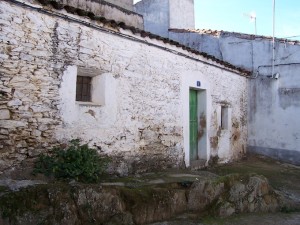 Alrededor del pueblo se encuentran las cercas que son terrenos de algunas hectáreas de extensión donde se guarda y pasta el ganado y los caballos. También en los alrededores del pueblo se encuentra el área comunal donde pastan las ovejas, las cabras y el ganado de los vecinos. Rodeando todo lo anterior se encuentra las grandes extensiones de terreno, que son fincas donde se da la ganadería extensiva y los toros de lidia.
Alrededor del pueblo se encuentran las cercas que son terrenos de algunas hectáreas de extensión donde se guarda y pasta el ganado y los caballos. También en los alrededores del pueblo se encuentra el área comunal donde pastan las ovejas, las cabras y el ganado de los vecinos. Rodeando todo lo anterior se encuentra las grandes extensiones de terreno, que son fincas donde se da la ganadería extensiva y los toros de lidia.
A village in the Extremadura
Monroy lies about 30 km from Cáceres, in the middle of the triangle Cáceres-Trujillo-Plasencia. Extremadura is surrounded by the mountains in the west, the north and the east. It has a continental climate with cold winters and hot summers and for ages it has been a fairly isolated area in Spain and until now still one of the poorest regions.
The village lies on a hillock in the highland and has been surrounded by water sources, and therefore in the past a good strategic spot for building a castle. That was at the beginning of the fourteenth century. Already before that the surroundings were inhabited in the bronze time and at the time of the Roman and the Visgoten.
In 1309 King Ferdinand IV granted to the nobleman Hernán Pérez the Monroy the privilege for founding the village and the construction of a castle Typically of the villages in this region is the composition. The old centre with church and castle, at the edge of the village the old corals where one grows vegetables, keeps cattle, horses, pigs and chickens and around the village the cercas, small plots of a few hectares where one mostly keeps cattle and also horses. Around the village the communal area, the grazing area for the sheep and cattle and to a lesser degree the goats. Bordering to the communal area are situated the haciëndas, large farms with extensive livestock-farming and bull-breeding.
From The Web – The Digital Scriptorium
The Digital Scriptorium is a growing image database of medieval and renaissance manuscripts that unites scattered resources from many institutions into an international tool for teaching and scholarly research.
As a visual catalog, DS allows scholars to verify with their own eyes cataloguing information about places and dates of origin, scripts, artists, and quality. Special emphasis is placed on the touchstone materials: manuscripts signed and dated by their scribes. DS records manuscripts that traditionally would have been unlikely candidates for reproduction. It fosters public viewing of materials otherwise available only within libraries. Because it is web-based, it encourages interaction between the knowledge of scholars and the holdings of libraries to build a reciprocal flow of information. Digital Scriptorium looks to the needs of a very diverse community of medievalists, classicists, musicologists, paleographers, diplomatists and art historians. At the same time Digital Scriptorium recognizes the limited resources of libraries; it bridges the gap between needs and resources by means of extensive rather than intensive cataloguing, often based on legacy data, and sample imaging.
Digital Scriptorium institutional partners have instituted a governance structure to plan jointly for the future of the program, in terms of scope, sustainability, and content.
Read more: http://bancroft.berkeley.edu/digitalscriptorium/
Dutch Wonderland!
Tolerance ranks high among the markers of being Dutch. In paintings of Rembrandt van Rijn one can possibly see that he was liberal and tolerant (Hoekveld-Meijer). Many scholars and politicians maintain that the Netherlands has a tradition of tolerance that harkens back to the 17th Century, generated by the Dutch tradesman spirit.
‘It’s a misconception that the Dutch are essentially racist and that they discriminate’ (Derksen, 2005, 38; italics mine -ldj). Paul Scheffer, who coined the concept of ‘a multicultural drama’ in the Netherlands, upholds his confidence in the Dutch: ‘Most people have essentially nothing against the presence of immigrants, and they want to live peacefully with them (Hooven, 2006, 112; italics mine -ldj). These reassurances of the Dutch being essentially good people may be an indication that nowadays the Dutch tend to behave differently than in the immigrant era of the 17th Century, suggesting that the Dutch have temporarily wandered off from the correct Dutch course. This Golden Century, as it is called in the Netherlands, still serves as a rich source for Dutch identity construction. Read more


